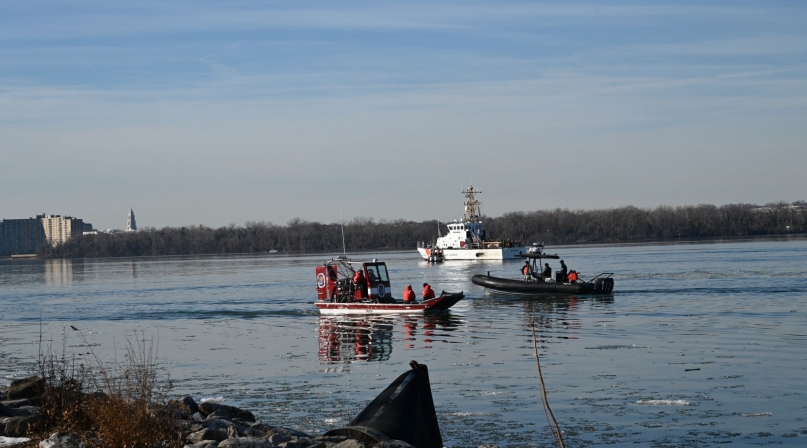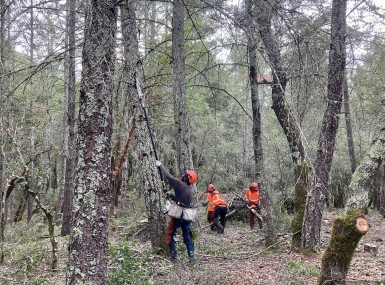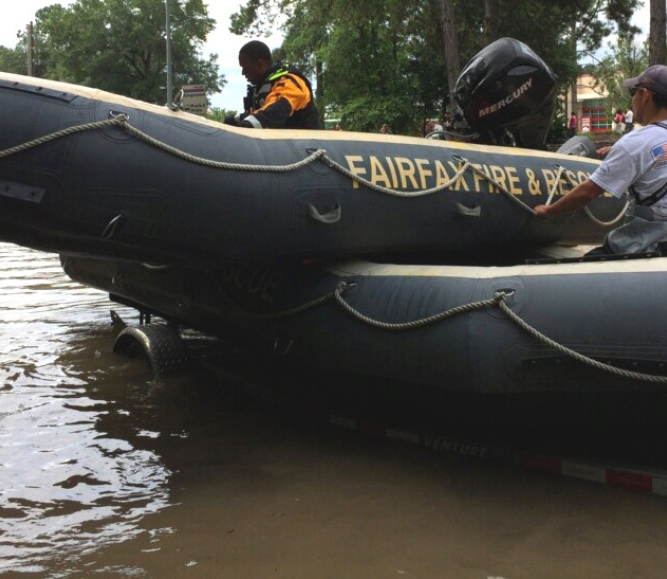Crash sets big stage for well-honed county mutual aid response effort

Key Takeaways
The lights may have been brighter than usual on responding agencies in the wake of the worst major U.S. commercial airline crash in more than 15 years, but the responses offered by the county emergency crews were practiced, routine and methodical in all phases of the response and recovery effort.
The collision between American Airlines Flight 5342 and an Army helicopter the evening of Jan. 29 over the Potomac River in Washington, D.C. killed 64 airline passengers approaching Arlington County, Va.’s Ronald Reagan Washington National Airport and three service members aboard the helicopter.
The mutual aid response was rapid.
The crash site in Washington, D.C. was close to several Virginia and Maryland counties, all of which contributed personnel and equipment in some way.
“We had several units already prepositioned, so whenever D.C. and the airport made the call, we quickly deployed and were able to arrive on scene and began assisting them with the immediate rescue efforts and then later with recovery,” said Tom Arnold, Fairfax County’s deputy county executive for Safety and Security.
“Northern Virginia and the metropolitan Washington region are very fortunate, we have mutual aid agreements — a Virginia agreement and Metropolitan Washington Council of Governments agreement — that they’ve had in place at least two decades.”
Arlington County, Va., home to Reagan National Airport, dispatched 11 units and 22 firefighter personnel to assist the Metropolitan Washington Airports Authority (MWAA) Fire and EMS with search and rescue efforts.
Fairfax County, Va. contributed 22 fire units and 68 personnel. Arlington County’s police department assisted with traffic control near Reagan National Airport that evening and assisted Metropolitan Washington Airports Authority Police Department with a visible police presence at and near the airport.
Loudoun County, Va. sheriff’s deputies handled traffic management and other functions at Dulles International Airport, which allowed MWAA to reassign personnel near the crash site.
Arlington County’s Department of Public Safety Communications and Emergency Management worked with MWAA Emergency Operations to coordinate support at National Airport and deployed staff to assist the D.C. Homeland Security and Emergency Management Agency.
The Fairfax County Police Department contributed a helicopter and the county’s dive team helped with recovery efforts the day after the crash.
The Prince George’s County, Md. Fire/EMS Department deployed command officers to the unified command post at Joint Base Bolling, directly across the Potomac River from National Airport, and Air Boat 847, based out of Fort Washington Fire/EMS Station 847, was deployed to assist the multi-jurisdictional response with debris recovery and diver shuttles.
Frederick County, Md. contributed three boats, along with water rescue personnel, to the recovery process.
Air Boat 847 continues a daily deployment to assist in recovery efforts.
From farther inland in Virginia, Prince William County sent Command Vehicle 503 from the Dumfries Triangle Volunteer Fire Department, which served as the command post overnight until the Federal Bureau of Investigation took over operations.
The county’s Department of Fire Rescue’s Incident Management Team assisted the unified command post for the six days following the crash. This command post included fire and rescue departments within council of governments, the FBI, the National Transportation Safety Board, the U.S. Coast Guard and other federal agencies assisting with the event.
Occoquan-Woodbridge-Lorton’s fire boat assisted the search for wreckage and victims for 16 hours the day following the crash and eight hours the next two days.
Notably, the Prince William County Department of Fire and Rescue and Frederick County are providing peer support counselors to regional agencies who have requested assistance.
“It was very cold and dark that night, and the search for survivors can be traumatizing,” said Erik McCoy, assistant chief of operations for Prince William County.
“We proactively sent peer support up, knowing how challenging an operation like that can be for first responders, and we’re making them available upon request to support those operations.”
Arnold noted that while the attention from such a national news story is elevated, the seamless response from the various county agencies is a result of nearly daily practice.
“We respond every day on a mutual aid basis,” he said. “We give and take and share resources across the line to Arlington, Alexandria, with Prince George’s County,” he said.
“These public safety agencies have a rapport for talking to each other on a monthly basis,” he noted.
“That’s standing meetings, but then also the frontline personnel are working together on a daily basis as they go back and forth between the jurisdictions responding to calls. It’s not out of the ordinary for someone to call for the fire department and have a truck from another county show up first.”
Although Arnold said the spectacle of the disaster and the county government contribution may closely compare to the response to the Pentagon on Sept. 11, 2001, the turnout from local governments in the Washington, D.C. area on par with the Flight 5342 crash happens at least once a year.
“We had a commercial building fire about 10 years ago in Fairfax County that brought out more response from other counties; it just didn’t get this kind of attention,” he said. “But none of it is chaotic because we work so well together.”
Related News

U.S. House reintroduces legislation to address the Medicaid Inmate Exclusion Policy
Two bipartisan bills aimed at addressing the Medicaid Inmate Exclusion Policy (MIEP) were recently reintroduced in the U.S. House of Representatives.

FEMA halts disaster mitigation grant program
On April 4, the Federal Emergency Management Agency (FEMA) announced it will not allocate $750 million this year for the Building Resilient Infrastructure and Communities (BRIC) grant program. According to the press release, FEMA will also stop funding BRIC projects that were previously approved and are still underway.

Counties support youth with a second chance opportunity
A Riverside County, Calif. supervisor took experiences from his former life as a teacher to help create a program that serves students who had gone the juvenile justice system and were looking for a second chance.
County News
Preventing Major Disasters

